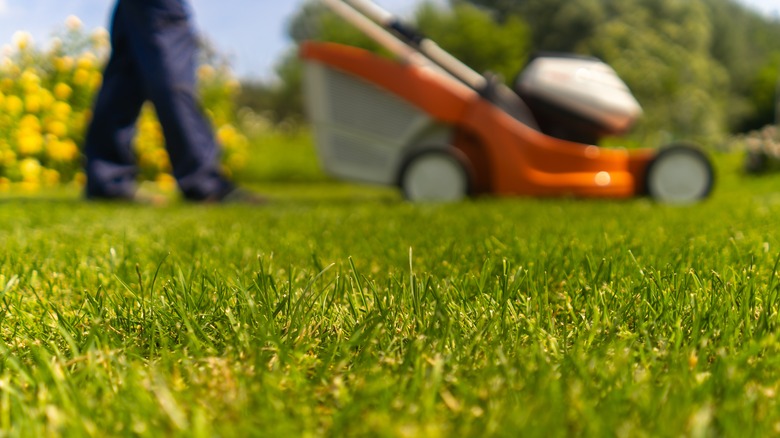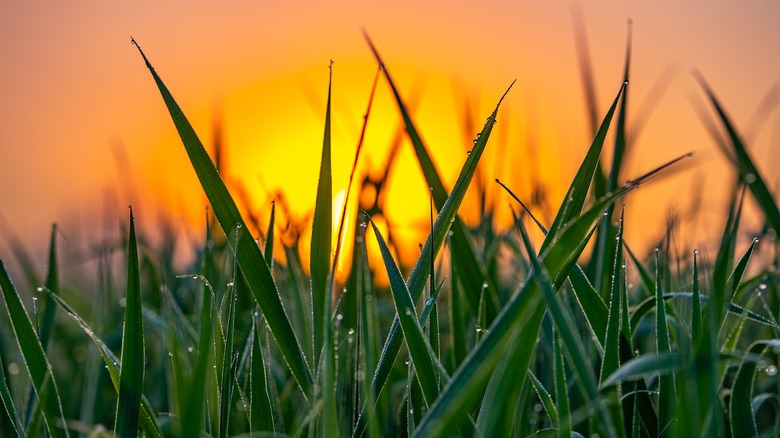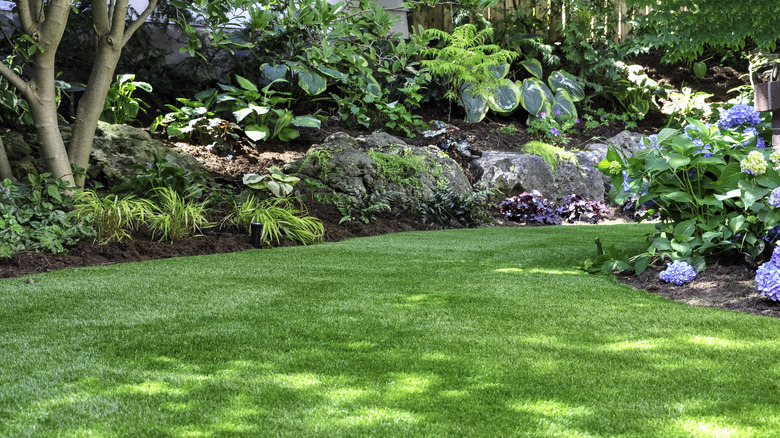The Crucial Midsummer Lawn Mowing Tip That Will Help Keep Your Grass Healthy
With the dog days of summer upon us, scorching heat can take a toll on your lawn. You may have noticed your grass isn't nearly as luxuriant and lush as it was in the first few weeks of summer. That's because the hottest time of year in most of the United States falls between the middle of July and the middle of August. This means you should be taking extra measures by midsummer to ensure your lawn doesn't suffer from the heat. You can give your grass relief by making a small height adjustment to your lawnmower blade.
Despite the fact that the days start to get shorter after the summer solstice around June 21 each year, the heat continues to creep up for another six weeks or so. When daytime temperatures exceed the amount of cooling that can occur at night, your yard starts to feel — and show — the stress. Even with occasional rain and regularly scheduled irrigation, the grass just can't keep up with its moisture needs. To combat these dryness issues, you can make a huge difference by raising the height of your mower's blade and mowing your lawn to the right length.
The shaggier, the shadier
While it may seem tempting to set your lawnmower blade low and get more bang for your cut, keeping your grass too short actually dries it out in the summer sun. Instead, set your blade 1 inch higher and let the grass grow a little longer. Doing this allows the grass to set down deeper roots and take advantage of any moisture in the soil. When each grass blade is longer, it also helps the soil retain its moisture and cool the grass roots by providing more shade underneath. Blocking the sun in this manner can also help reduce the growth of weeds.
In the hottest months, it's recommended that you let your grass grow to about 4 inches tall and then mow it down to 3 inches, but it can vary slightly depending on your specific variety of grass. Mowing less frequently, when possible, is another tip that's recommended to help retain moisture. Each time the mower blades strike the top of the grass blades, crucial moisture is lost through the tips.
That being said, you also don't want to let your grass grow too high. If this happens, the grass may stop sending out new shoots, called tillers. Long grass can also be an invitation to pests, rodents, or even fungal diseases. And just as short grasses let in too much sunlight, longer grasses that begin to bend and droop will block out the light altogether, resulting in dead grass. Nature is truly a delicate balance.
Nature equals nurture
Employing natural methods to keep your lawn green not only helps save money, but also reduces the use of chemicals in your yard. Something as simple as limiting the number of times you cut your grass can save on water, gas, or electricity (depending on your type of mower), time, and expensive products like fertilizer or other nutrients designed to restore lawn health. Over-mowing can also cause weed growth, which can lead to the use of pesticides.
You may be surprised to learn that you've been killing your grass without knowing it with many common lawn care mistakes. Dialing in proper irrigation, fertilization, and aeration — and, yes, even your mowing schedule and grass length — can have a huge positive impact on the health of your backyard. If you notice that it's not just your grass feeling the stress of summer, you can protect other plants from the brutal heat with creative ways to bring them shade as well. Hot, dry summers don't need to bring ruin to your landscaping if you know how to help your yard and lawn beat the heat.


